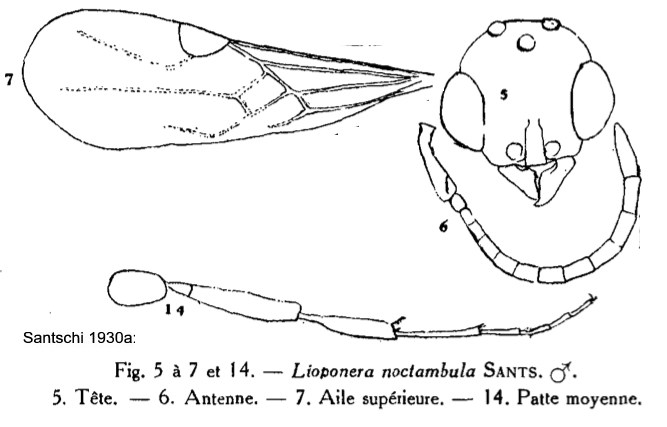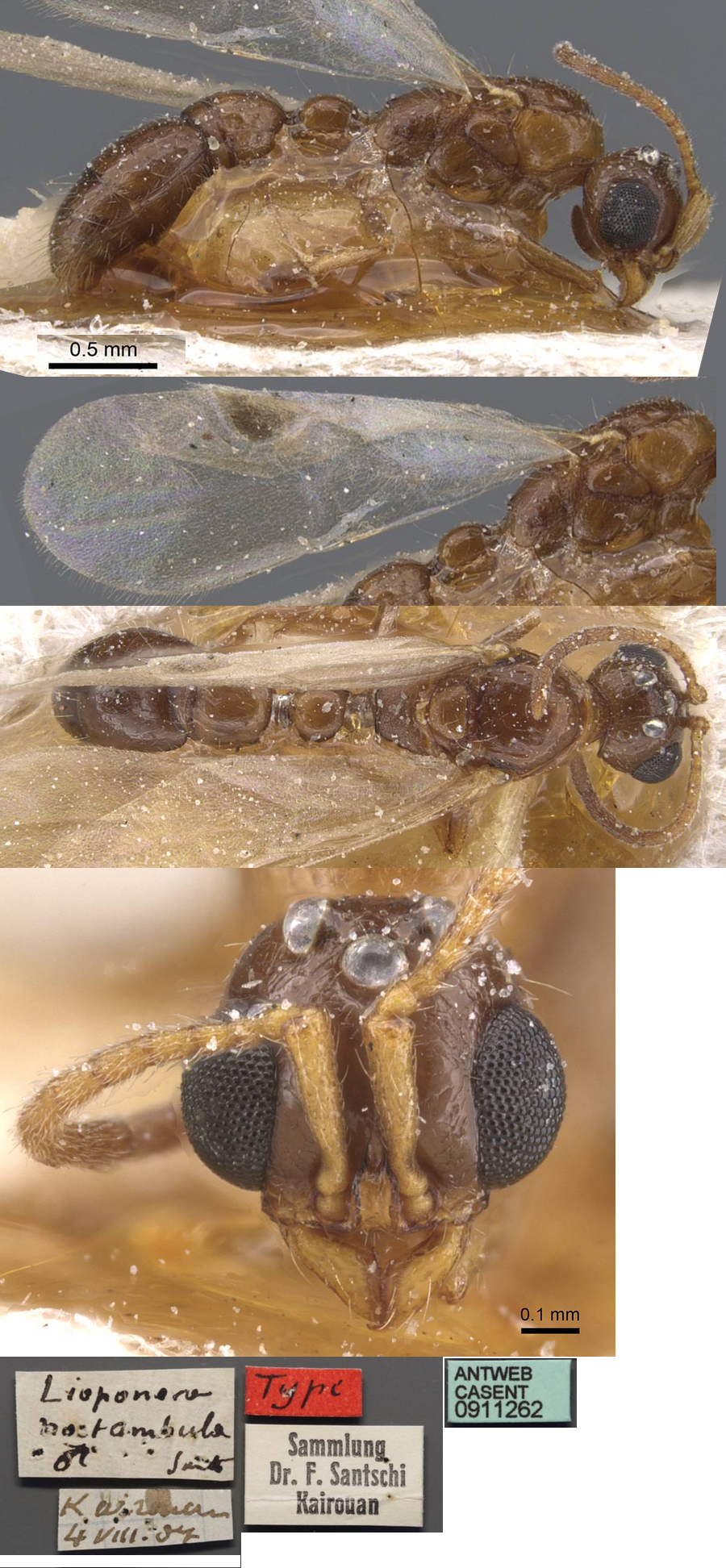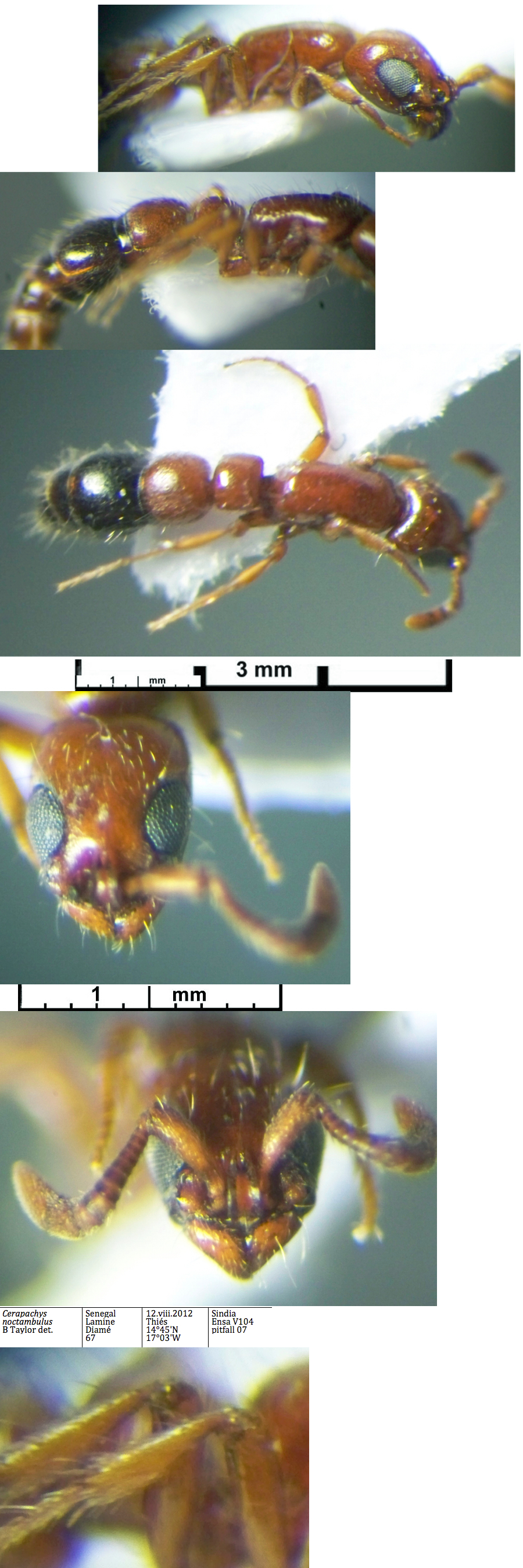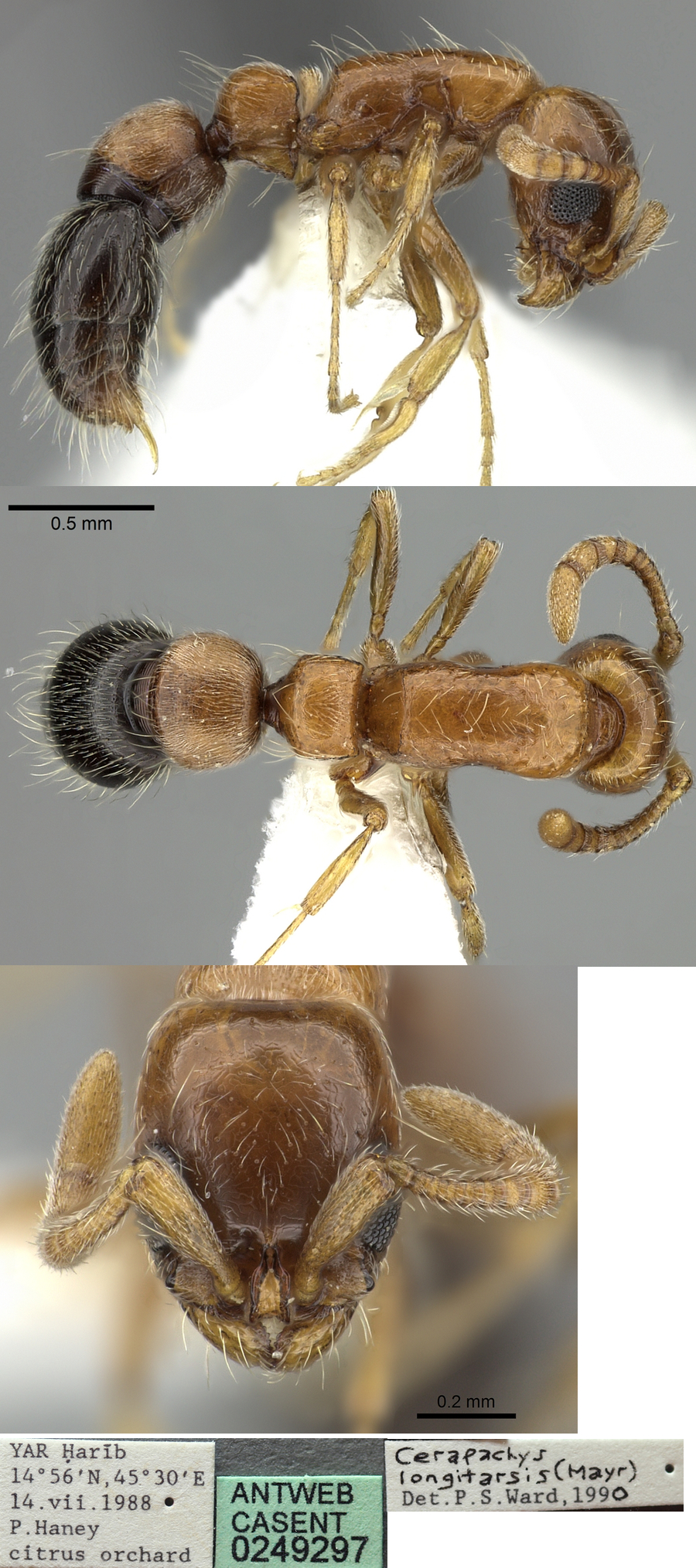Cerapachys noctambulus (Santschi) - revived
status
  Type location Tunisia
(Lioponera noctambulus Santschi, 1910d: 70, male); male only
known - see below. Type location Tunisia
(Lioponera noctambulus Santschi, 1910d: 70, male); male only
known - see below.
junior synonyms (new here)
aegypticus (Lioponera
cooperi, Donisthorpe, 1939a: 256, male; uncesssary replacement name
Cerapachys
aegypticus Brown, 1975: 22, rename only (not spelt aegyptiacus, no other information
on p
63; synonymy Bolton, 1995: 142) from Egypt - see http://www.antweb.org/specimenImages.do?code=casent0902740
alfierii
(Lioponera alfierii, Donisthorpe, 1939a: 256, male; new synonymy
Bolton, 1995: 142) from Egypt - see http://www.antweb.org/specimenImages.do?code=casent0902739
|
 Santschi's
(1910d) description is at Santschi's
(1910d) description is at 
Donisthorpe's (1939a) descriptions of alfierii
and cooperi are at  . .
Egypt record as above.
I have placed the workers shown below as the previously
unreported workers of noctambulus
because the general colouration and shape of the pedicel segments
appear very similar.
The Donisthorpe males are almost identical to the noctambulus type male and the
Bolton (1995) synonymy under Cerapachys longitarsus is
changed.
|
 The photomontage of
the type male is collated from http://www.antweb.org/specimen.do?name=casent0911262 The photomontage of
the type male is collated from http://www.antweb.org/specimen.do?name=casent0911262
|
 The
photomontage is of a worker from Senegal, Doyene-KS;
collector Lamine Diamé (66). Note: these both have 11-segmented
antennae, as does the Yemen worker shown below. The TL is ca. 4.0 mm,
HL 0.77, HW 0.62, SL 0.44, EL 0.30; CI 82, SI 60, EI (EL/HL) 39. The
photomontage is of a worker from Senegal, Doyene-KS;
collector Lamine Diamé (66). Note: these both have 11-segmented
antennae, as does the Yemen worker shown below. The TL is ca. 4.0 mm,
HL 0.77, HW 0.62, SL 0.44, EL 0.30; CI 82, SI 60, EI (EL/HL) 39.
The workers of Cerapachys longitarsus have
12-segmented antennae and, although sharing similar morphology and
colouration are some 25% smaller. They also have smaller eyes, shorter
erect pilosity and a relatively small near circular postpetiole when
seen from above.
|
 The
photomontage is of a worker from Senegal,
Thiés;
collector Lamine Diamé (67). The
photomontage is of a worker from Senegal,
Thiés;
collector Lamine Diamé (67).
|
 The
photomontage of a worker from Yemen, is collated
from http://www.antweb.org/specimen.do?name=casent0249497 The
photomontage of a worker from Yemen, is collated
from http://www.antweb.org/specimen.do?name=casent0249497
|
|